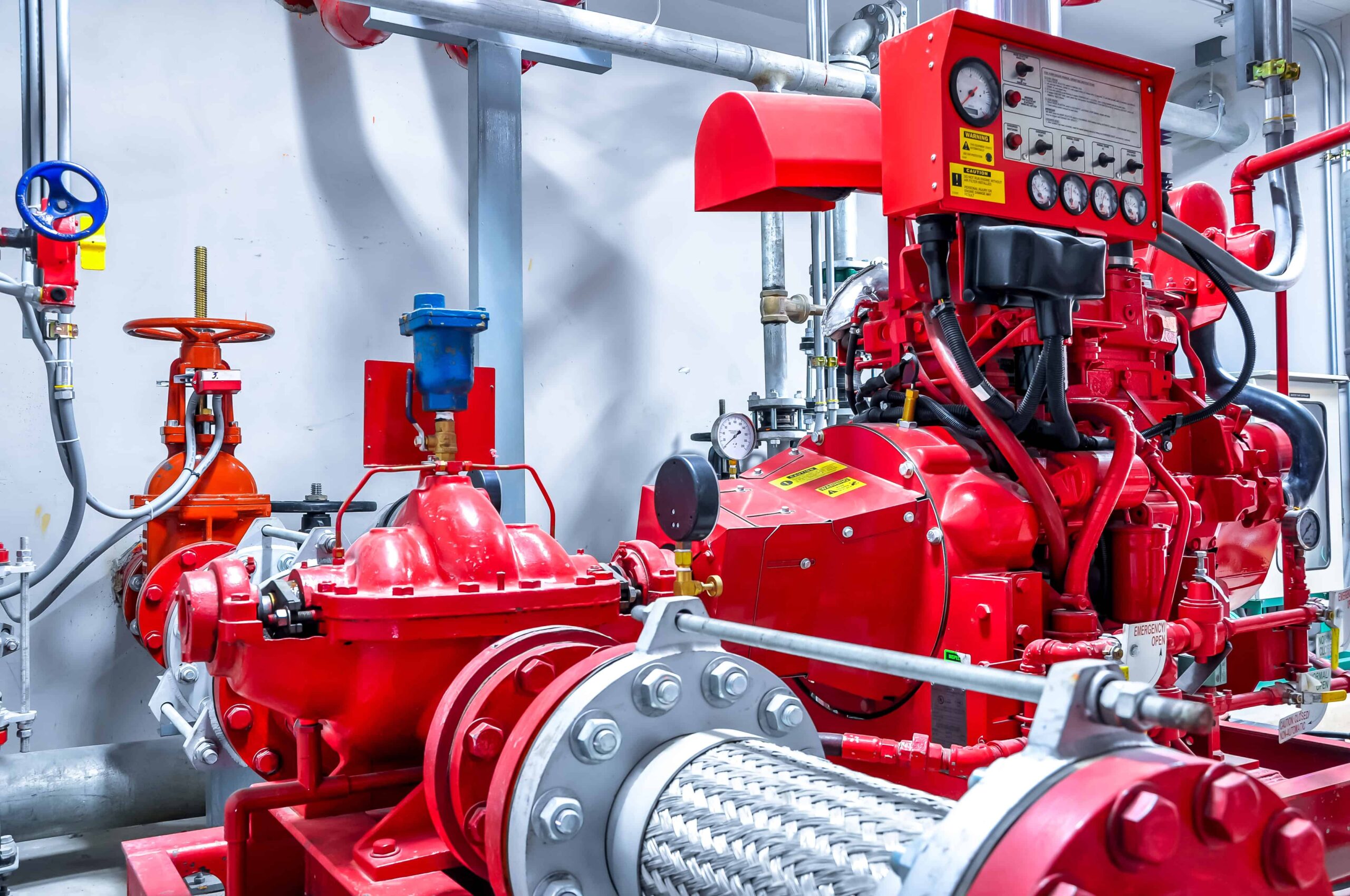Fire pumps are a very important part of a fire safety system, especially in places where the water flow may not be sufficient to extinguish the fire on its own. In case of emergency, fire pumps ensure that water is supplied under high pressure to the sprinkler system, hose or standpipe. Their role is essential and if not maintained properly, it can have adverse consequences such as property damage, personal injury or even death. Keeping fire pumps in good condition is therefore not only a suggestion, but also a legal and safety requirement.
Regular inspections
Regular inspections are the most important part of maintaining fire pumps. Weekly inspections can help detect problems early and prevent the pump from suddenly stopping. During the inspection, leaks, rust and other obvious signs of wear are checked. To ensure good air circulation and access, the area around the fire pump must be kept clean and free of debris. Early detection of problems can help prevent small problems from developing into major problems in an emergency.
Perform weekly and annual tests
Fire pumps need to be checked regularly to ensure they are working properly. Performing a weekly agitation test is both simple and necessary. To ensure the pump is working properly, you need to run it without leaks. A more extensive flow test is performed annually, where pressure and flow are measured in an emergency to see how the pump is actually functioning. These tests ensure that the pump is delivering water as planned and designed during a fire.
Ensure components are properly lubricated
Fire pumps, like any other machine with working parts, need to be lubricated. To prevent parts from seizing and overheating, bearings, gears, and motors need the right amount and type of lubrication. Without lubrication, parts can wear out quickly, which can lead to expensive repairs or complete system failure. Checking and maintaining the oil level according to the manufacturer’s instructions will ensure the pump lasts longer and operates reliably.
Check the electrical system and controller
The fire pump operator is responsible for the entire pump system. To prevent the electrical system from failing, the wiring, wires, and backup batteries should be checked regularly. If the wires are corroded, the connections are loose, or the battery is dead, the fire pump may not start when needed. Keeping the power on and all emergency functions functioning properly is crucial to the proper functioning of the fire pump.
Make sure the supply and suction lines are in good condition
Fire pumps can only function properly if they draw water from a safe source. The water source must be free of obstructions and blockages, whether it is connected to a city water supply or a storage tank. Check the suction line to make sure it is not clogged or leaking, as this can reduce pressure or damage the pump. Maintaining a clean, consistent water supply ensures that the fire pump has sufficient water during a fire.
Check the pressure on pressure gauges and valves. Valves are important for controlling water flow, while pressure gauges monitor the pressure in the system. All valves must be in the correct position (open or closed) and free of rust or mechanical problems. Faulty gauges can provide incorrect readings, causing workers to miss problems. Ensuring that gauges read correctly and switches operate smoothly contributes to the safety and efficiency of the system.
Maintain the Engine
Fire pumps can be powered by either a gasoline engine or an electric motor. Both types of engines require special care to keep them running properly. When operating a diesel pump, workers must ensure that the engine starts as required and check the fuel level. Electric fans must be kept dry and electrical wiring must be checked for problems. Running the engine under load regularly will ensure that it will continue to operate properly in the event of an emergency.
Keep Detailed Maintenance Records
A very important part of any maintenance program is record keeping. Records of inspections, tests, repairs, and updates can help track the long-term performance of the fire pump. This data is often required for insurance purposes or to comply with fire safety regulations. Up-to-date data shows that the fire safety system is being properly maintained in the event of an incident or when an audit is required.
In Summary
Maintaining fire pumps is more than a technical task; it is a commitment to the safety of people, property and your investment. With regular inspections, testing, cleaning, lubrication and documentation, the system is always prepared for disaster. Knowledge and operation of every component of a fire pump system, from power to water supply to control panels, gives you peace of mind and ensures that you comply with regulations. In a fire, every second counts, and a well-maintained fire pump can mean the difference between a disaster and a minor incident.

